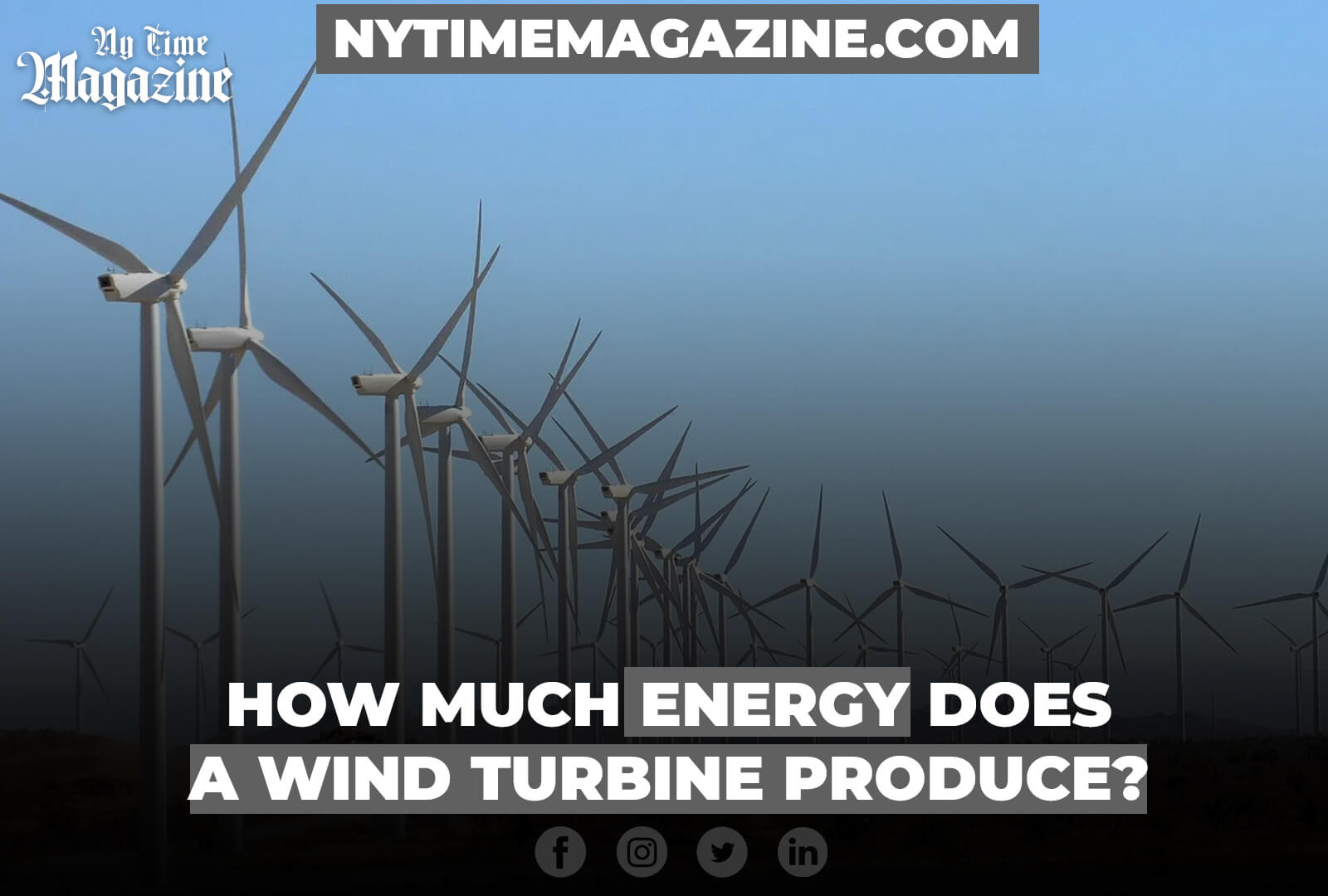As the world shifts towards cleaner and more sustainable energy sources, wind power has emerged as a prominent player in the renewable energy landscape. Wind turbines, with their towering presence on landscapes and coastlines, harness the kinetic energy of the wind to produce electricity. In this article, we explore the intricacies of wind energy production, examining the factors that influence how much energy a wind turbine can generate.
Contents
Tapping into Wind Power
Wind energy is a renewable resource derived from the movement of air masses created by the sun’s uneven heating of the Earth’s surface. Wind turbines are ingeniously designed to convert the kinetic energy of wind into mechanical energy, which is then transformed into electrical power. These turbines consist of large rotor blades connected to a hub, which is linked to a generator. As the wind blows, it causes the rotor blades to rotate, driving the generator and generating electricity.
Factors Influencing Wind Energy Production
- Wind Speed and Energy Production: The foremost factor affecting energy output is wind speed. So, how much energy does a wind turbine produce? The answer hinges on the wind speed. The power in the wind is proportional to the cube of the wind speed, which means even a slight increase in wind speed can lead to a substantial boost in power output. Wind turbines have a “cut-in” wind speed (typically around 3-4 meters per second) below which they don’t produce power, a rated wind speed at which they reach their maximum power output, and a “cut-out” wind speed (around 25 meters per second) at which they shut down to prevent damage.
- Rotor Size and Design: Another key factor in energy production is the size and design of the rotor blades. Larger rotor blades capture more wind energy, enabling turbines to generate higher electricity yields. The shape and design of the blades also influence their efficiency in varying wind conditions.
- Turbine Height and Energy Generation: The height of the wind turbine plays a crucial role. Wind speed tends to increase with altitude due to reduced ground friction. Taller wind turbines can access higher and more consistent wind speeds, enhancing their energy production potential. However, taller turbines also pose engineering and logistical challenges.
- Location Impact on Energy Production: The geographical location of a wind turbine greatly influences its energy production. Coastal and elevated areas often experience stronger and more consistent winds, making them ideal locations for wind farms. Terrain, nearby obstacles, and local wind patterns can also impact energy generation.
- Generator Efficiency: Beyond the physical factors, the efficiency of the generator in converting mechanical energy into electrical energy affects the overall energy output of a wind turbine. Advances in generator technology have led to improved conversion efficiency.
Calculating Wind Turbine Energy Generation
The energy produced by a wind turbine is measured in kilowatt-hours (kWh). The formula for calculating wind turbine energy production is as follows:
Energy (kWh) = 0.5 x A x Cp x ρ x V³
Where:
- A is the rotor-swept area (the area covered by the spinning blades).
- Cp is the coefficient of performance, representing the turbine’s efficiency in converting wind power into mechanical power (ranging from 0 to 1).
- ρ is the air density.
- V is the wind speed.
Wind Energy Capacity and Output
Wind turbines are typically categorized by their capacity, which denotes the maximum power they can generate under optimal conditions. Common capacities range from a few hundred kilowatts to several megawatts per turbine. However, it’s important to note that a wind turbine’s actual output can vary widely based on the factors mentioned earlier.
In Conclusion
Wind energy is a dynamic and sustainable source of electricity with significant potential in the global transition to cleaner energy production. Wind turbines, with their ability to convert wind’s kinetic energy into electrical power, play a pivotal role in this endeavor. Understanding the factors that influence wind energy production and the associated calculations, including “how much energy does a wind turbine produce,” is crucial for optimizing the design, placement, and operation of wind turbines to maximize their energy production capabilities. As technology continues to advance, wind energy is poised to play an increasingly significant role in shaping the future of energy production and environmental conservation.
Frequently Asked Questions
1. What Is Wind Energy, and How Is It Generated?
- Wind energy is a form of renewable energy harnessed from the movement of air masses caused by the sun’s uneven heating of the Earth’s surface. It’s generated using wind turbines, which convert the kinetic energy of the wind into electricity.
2. How Does a Wind Turbine Work?
- Wind turbines work by capturing the kinetic energy in the wind with large rotor blades. As the wind blows, these blades spin, turning a generator that produces electricity.
3. What Factors Affect the Energy Production of Wind Turbines?
- Several factors influence a wind turbine’s energy production, including wind speed, rotor size, turbine height, location, and generator efficiency.
4. What Is the Lifespan of a Wind Turbine?
- The average lifespan of a wind turbine is about 20-25 years. With proper maintenance, some turbines can even operate for 30 years or more.
5. Are Wind Turbines Noisy?
- Modern wind turbines are designed to be relatively quiet. The noise they produce is often compared to a quiet conversation or a soft whisper.
6. How Much Electricity Can a Single Wind Turbine Generate?
- The electricity output of a wind turbine varies based on its size and location. On average, a typical wind turbine can generate enough electricity to power hundreds of homes.
7. Are Wind Turbines Environmentally Friendly?
- Yes, wind turbines are considered environmentally friendly because they produce clean electricity without emitting greenhouse gases or air pollutants. They also have a small land footprint compared to fossil fuel power plants.
8. Can Wind Turbines Be Used for Residential Power Generation?
- While small-scale wind turbines can be used for residential power generation, they are most effective in areas with consistent, strong winds. It’s important to assess the wind potential of your location before investing in a residential wind turbine.
9. What Is Offshore Wind Energy, and Why Is It Important?
- Offshore wind energy involves placing wind turbines in bodies of water, typically in the ocean. It’s important because it can tap into stronger and more consistent wind resources and reduce the visual impact of turbines on land.
10. How Does Wind Energy Contribute to a Sustainable Future?
- Wind energy plays a crucial role in reducing our reliance on fossil fuels, combating climate change, and transitioning to a more sustainable and eco-friendly energy system. It helps reduce carbon emissions and air pollution, making it a key part of a greener future.



